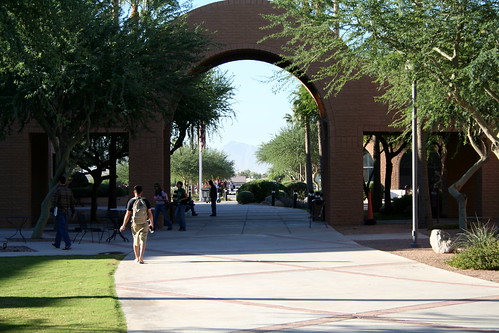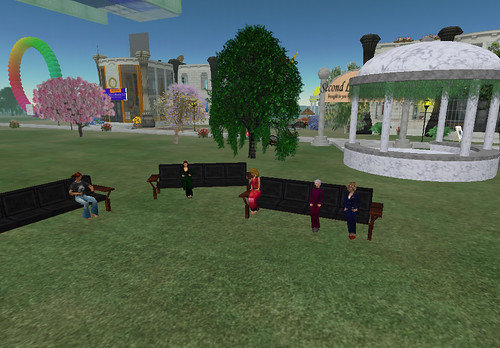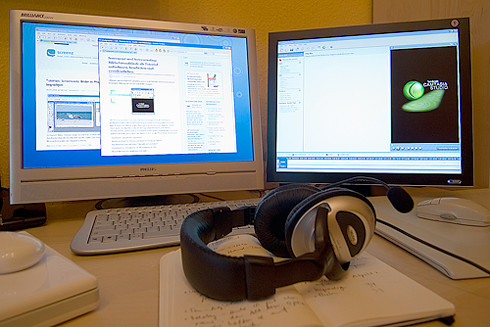Saturday, June 17, 2006
Barcamp Pune - 17 June 2006 - Technology Enabled Learning
The crux of this talk is: how can we use technology to achieve self guided continuous learning.
Attribution: All the images in this presentation have been taken from Flickr and are licenced under the Creative Commons licence. They are copyright of their respective owners.
Happy learning :-)
The crux of this talk is: how can we use technology to achieve self guided continuous learning.
Attribution: All the images in this presentation have been taken from Flickr and are licenced under the Creative Commons licence. They are copyright of their respective owners.
Happy learning :-)
Friday, June 16, 2006
The way ahead
- Remember, the best learning occurs in a stimulating, active, challenging, interesting, engaging environment
- Join a learning community
- Create your own learning community
- Participate in barcamps and openspaces
- Be generous enough to share your experiences and knowledge with others
My point? I’m getting tired of hearing people continue to ask for the evidence that technology helps students learn. It doesn’t matter. We know — that good teachers help students learn. We need technology in every classroom and in every student and teacher’s hand, because it is the pen and paper of our time, and it is the lens through which we experience much of our world. [src]
Learning institutions will be replaced with learning ecologies



Putting it all together

So how do we use all these technologies to be bicycle riding learners?
- Identify learning goals
- Make a plan
- Manage the plan
- Wiki
- ePortfolio
- Identify resources
- Books
- Journals
- Online resources
- Articles
- Newsletters
- Blogs/podcasts/screencasts
- Wikis
- Open course ware - offered by several institutions
- Consume the resource
- Record, (reflect, practice, and discuss)* on the knowledge
- Writing a blog
- Commenting on other people's blogs
- On a discussion board
- Answering quizzes
- Assignments
- Hands on development
- Teach
- Use micro mentoring

Learning Tools

- Blogs
- Provides first hand news on various topics
- Can be used as a learning journal
- Provides a tool for a more interactive learning experience
- Establishent -> Introspection -> Reflective Monologue -> Reflective Dialogue -> Knowledge Creation
- Newsreaders
- Allows us to effively track news, changes, and blogs
- Wiki's
- Shared whiteboard
- Collaboration medium
- Groups
- Facilitate discussion
- Online calendars
- Facilitate scheduling and event announcements
- Flickr
- Facilitates sharing of photographs and images
- Facilitates reuse of images distributed under a Creative Commons license
- Conferencing
- Allows real time interaction for distributed groups
- Podcasting/screencasting/videocasting
- Facilitates distribution of rich media
- harnesses the power of RSS for rich media
- ePortfolios
- Facilitates users to track their learning goals and outcomes
- Facilitates users to show case their learning
- Delicious
- Facilitates people to tag resources of interest
- Facilitates community wide sharing of tags
- coComment
- Allows users to track their comments on other peoples blogs
- online mind mapping and diagramming
- Allows users to represent knowledge in a way that is native to their brains
- Second life
- Facilitates an extremely rich distributed collaboration environment
- Uses
- Socializing
- Meetings/Conferences/Barcamps/...
- Customer support
- Virtual workplaces
- Virtual universities

The New Learning Environment

The learning landscape has changed. The new environment is:
The new way to progress and innovation (according to Kathy Sierra)

The learning landscape has changed. The new environment is:
- Networked
- Collaborative
- Guided by micromentors
- Teacher, guide, mentor, collegue
- Print books
- The digital universe
- Wiki's
- Blogs
- Discussion boards
- Chat
- Audio and video conferencing
- VOIP
- Virtual wordls
Monday, June 12, 2006
Learning To Learn - with Web 2.0 technologies
Learning has changed significantly in the past few years as the knowledge needs of people and tools available to them have changed.
Learning Before:
Now let's see what Kathy Sierra has to say about ideal learning (more...)


Learning has changed significantly in the past few years as the knowledge needs of people and tools available to them have changed.
Learning Before:
- Most learning happened in the classroom
- The knowledge was sufficient for decades with very little upgrading (2)
- Half life of knowledge was large
- The pressure to continuously learn new things was less
- Learning was formal
- Learning was individual
- Learning was generic
- Lecturing was only related to factual information
- Teacher and print media served as the primary means of communication and information
- Learning was separated from the rest of the community
- Only 10-20% of learning happens in the classroom (1)
- Only fundamentals last… the knowledge changes
- Half life of knowledge is less (3)
- The pressure to continuously learn new things is VERY high
- Learning is informal (4)
- Learning is networked & collaborative (5)
- Learning is personalized (6)
- Lecturing is about guiding, motivating, and facilitating (7)
- Learning using a vast variety of media including the Internet (7)
- Learning now occurs globally (7)
Now let's see what Kathy Sierra has to say about ideal learning (more...)


Subscribe to:
Posts (Atom)





